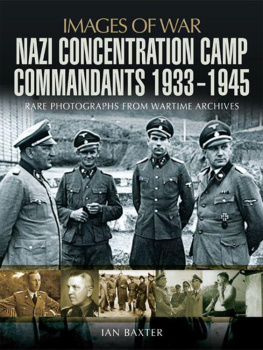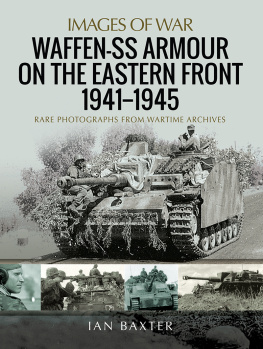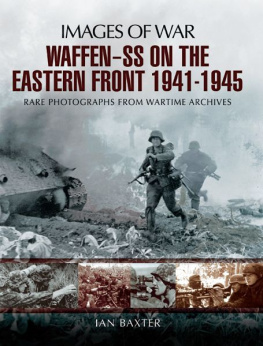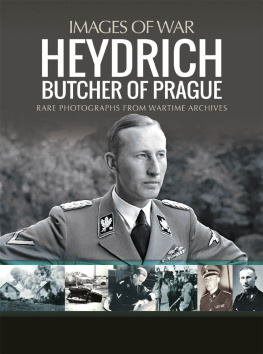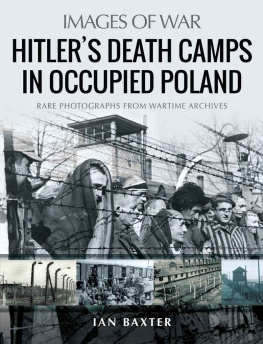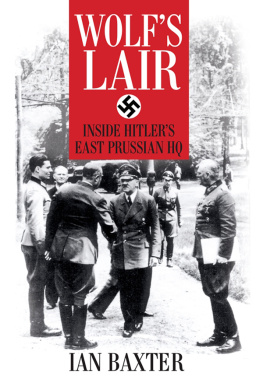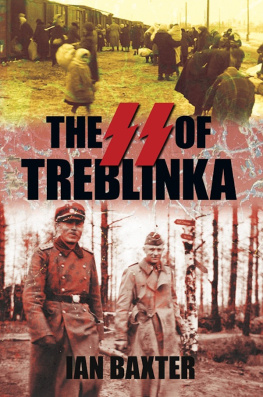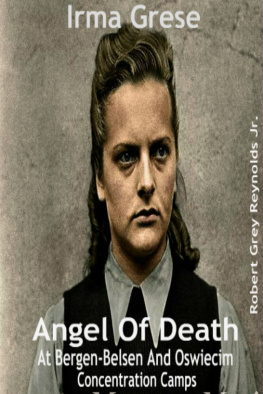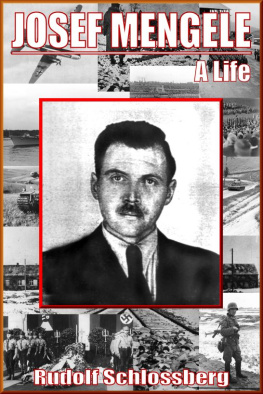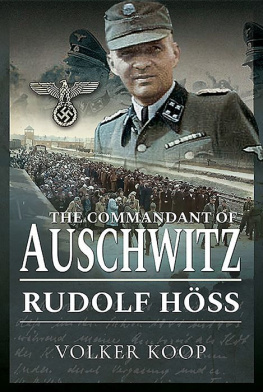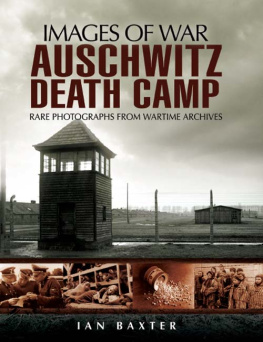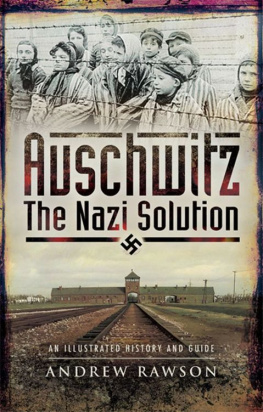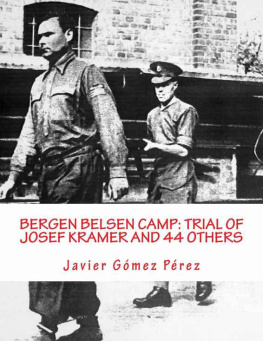
First published in Great Britain in 2014 by
PEN & SWORD MILITARY
An imprint of
Pen & Sword Books Ltd
47 Church Street
Barnsley
South Yorkshire
S70 2AS
Copyright Ian Baxter, 2014
ISBN 978-1-78159-388-2
eISBN 9781473846784
The right of Ian Baxter to be identified as author of this work has been asserted by him in accordance with the Copyright, Designs and Patents Act 1988.
A CIP catalogue record for this book is available from the British Library.
All rights reserved. No part of this book may be reproduced or transmitted in any form or by any means, electronic or mechanical including photocopying, recording or by any information storage and retrieval system, without permission from the Publisher in writing.
Typeset by Concept, Huddersfield, West Yorkshire HD4 5JL.
Printed and bound in England by CPI Group (UK) Ltd, Croydon CR0 4YY.
Pen & Sword Books Ltd incorporates the imprints of Pen & Sword Archaeology, Atlas, Aviation, Battleground, Discovery, Family History, History, Maritime, Military, Naval, Politics, Railways, Select, Social History, Transport, True Crime, and Claymore Press, Frontline Books, Leo Cooper, Praetorian Press, Remember When, Seaforth Publishing and Wharncliffe.
For a complete list of Pen & Sword titles please contact
PEN & SWORD BOOKS LIMITED
47 Church Street, Barnsley, South Yorkshire, S70 2AS, England
E-mail: enquiries@pen-and-sword.co.uk
Website: www.pen-and-sword.co.uk
Contents
About the Author
Ian Baxter is a military historian who specialises in German twentieth-century military history. He has written more than forty books including Poland The Eighteen Day Victory March, Panzers in North Africa, The Ardennes Offensive, The Western Campaign, The 12th SS Panzer-Division Hitlerjugend, The Waffen-SS on the Western Front, The Waffen-SS on the Eastern Front, The Red Army at Stalingrad, Elite German Forces of World War II, Armoured Warfare, German Tanks of War, Blitzkrieg, Panzer-Divisions at War, Hitlers Panzers, German Armoured Vehicles of World War Two, Last Two Years of the Waffen-SS at War, German Soldier Uniforms and Insignia, German Guns of the Third Reich, Defeat to Retreat: The Last Years of the German Army at War 19431945, Operation Bagration the destruction of Army Group Centre, German Guns of the Third Reich, Rommel and the Afrika Korps, U-Boat War, and most recently The Sixth Army, the Road to Stalingrad, German Mountain Troops, and Himmlers Nazi Concentration Camp Guards. He has also written over 100 articles including Last Days of Hitler, Wolfs Lair, Story of the V1 and V2 Rocket Programme, Secret Aircraft of World War Two, Rommel At Tobruk, Hitlers War with his Generals, Secret British Plans to Assassinate Hitler, SS At Arnhem, Hitlerjugend, Battle Of Caen 1944, Gebirgsjger at War, Panzer Crews, Hitlerjugend Guerrillas, Last Battles in the East, Battle of Berlin and many more. He has also reviewed numerous military studies for publication, supplied thousands of photographs and important documents to various publishers and film production companies worldwide, and lectures to various schools, colleges and universities throughout the United Kingdom and Southern Ireland.
Introduction
C oncentration Camp Commandants is a reassessment of the men who were in charge of many of the largest work and mass murder camps in Europe, where they often ordered the killing of tens of thousands of people. Drawing on published and unpublished material and the handwritten memoirs of some of these commandants, the book is a compelling and chilling story told through the eyes of these terrible men, and those who knew them. The book describes vividly daily life at these camps and reveals diaries from staff and friends, describing in detail their brutal hold over the camps both against their own staff and those interned. This book reassesses their psychological personalities and produces evidence that sometimes these men were not all sadistic unhinged brutes like many other concentration camp commanders. Yet many of them were mass murderers. Most of the commandants were eager to please, and keen to show their superiors they were great innovators in the way they organised the killing process. They often undertook their mammoth tasks of extermination like competent businessman. For instance, Rudolf Hss had, within just three years of becoming commandant of Auschwitz, turned the previously quiet and secluded complex there into the largest mass murder factory in the history of the world. But behind this barbarism Hss was a husband and father. On the edge of the Auschwitz main camp Frau Hss and her well-groomed children lived in more or less harmony. Here she baked cakes, cooked German homemade dishes, ensured the gardens were tended lovingly and the wine cellar was well stocked. Each day Rudolf would arrive home following a hard day masterminding the killing of thousands. And yet he clearly struggled with his task. Often he would take himself off at night and stand out at the gas chambers or at the burnings, and was forced to think of his wife and children without connecting them to the horrors that were taking place nearby. But in spite of the constant pressures Hss, like so many other commandants, remained throughout fixated to the last on command and obedience. The commandants believed whole-heartedly that no one else could perform as well as they could in such terrible circumstances. In the end, whilst waiting sentence for their crimes, no shock could disturb their conviction that in their eyes they had always done right and that they had done their duty conscientiously, attentively, and to everyones satisfaction.
The story of Concentration Camp Commandants from early beginnings to the mass murder of millions of innocent souls is a gripping narration and a valuable addition to Holocaust studies. It is a disturbing portrayal of some of the most notorious men in the Nazi regime and an incredible insight into the mind of mass murderers.
Concentration Camps
T he first concentration camps were erected in Germany in February 1933. Primarily these camps were used to house and torture political opponents and union organisers. The camps held some 45,000 prisoners and during the mid-to late-1930s these camps were greatly expanded. When SS-Reichsfhrer Heinrich Himmler took control of the concentration camp system throughout Germany he started using the camps facilities and personnel to purge German society of so-called racially undesirable elements such as Jews, criminals, homosexuals, Jehovahs witnesses, Gypsies and any other elements deemed a threat to Nazi rule. The concentration camps were administered by the Concentration Camps Inspectorate which in 1942 was merged into SS-Wirtschafts-Verwaltungshauptamt and were guarded by SS-Totenkopfverbnde .
As early as1940 the situation in the concentration camps had become untenable due to the new policies of arresting and detaining enemies of the State. News had already circulated through SS channels that government officials were now demanding immediate action in the expansion of the concentration camp system throughout Germany and its new conquered territory, Poland. The German authorities quickly pressed forward to establish various camps where the arrested could be incarcerated and set to work as stonebreakers and construction workers for buildings and streets. It was envisaged that these people would remain as a slave labour force, and it was therefore deemed necessary to erect these so called quarantine camps in order to subdue the local population. Initially, it had been proposed that the quarantine camps were to hold the prisoners until they were sent to the various other concentration camps in the Reich . However, it soon became apparent that this purpose was totally impracticable. So it was approved that these camps were to function as a permanent prison for all those who were unfortunate enough to have been sent there.
Next page
